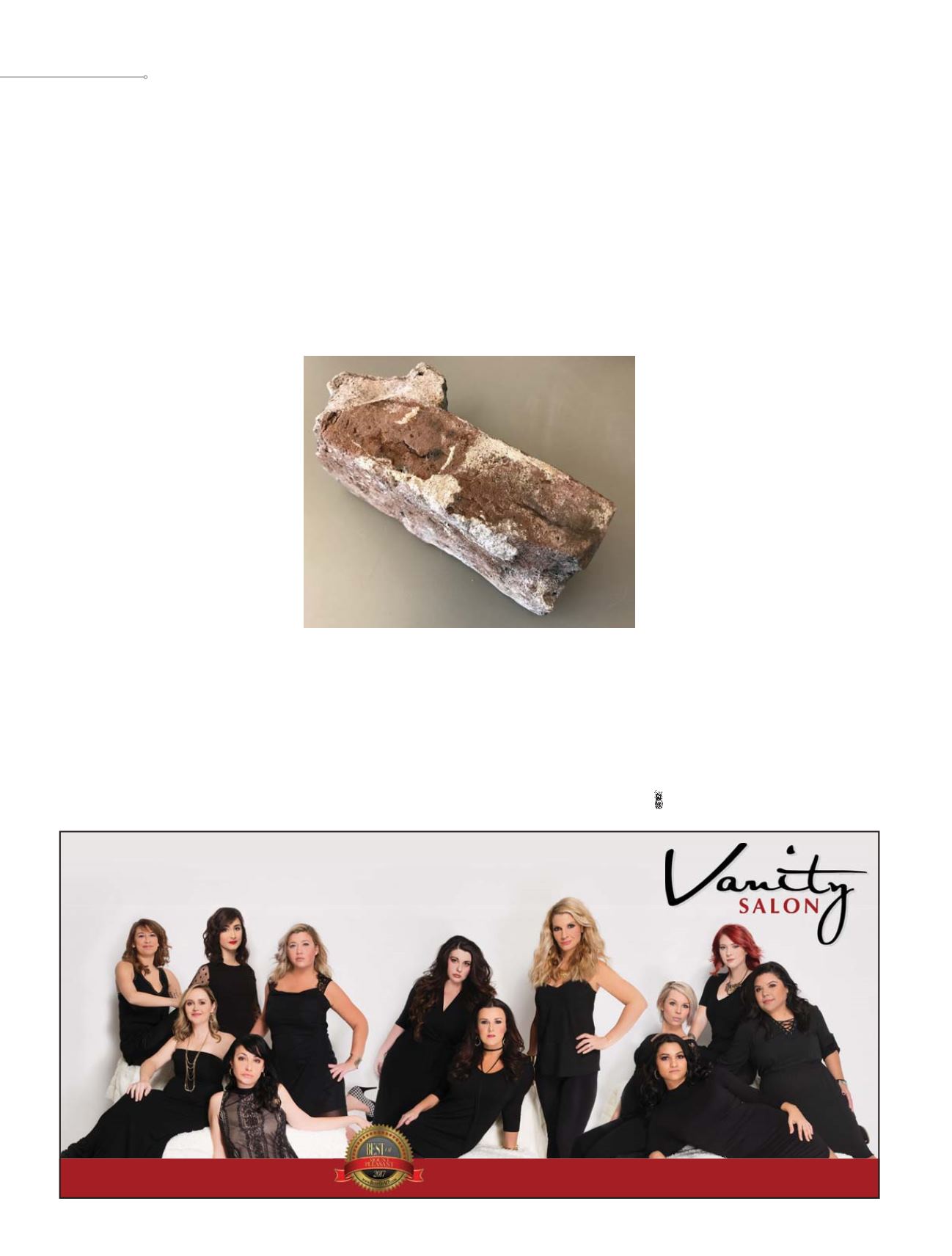

96
www.MountPleasantMagazine.com|
www.ILoveMountPleasant.com|
www.MountPleasantHomes.comtown hall
today,” Hedden said.
To make the bricks back then, clay was dug out of the
ground, pressed into molds and set out in the sun to dry.
“The molds would then be placed into a kiln to
harden,” Hedden said.
The brickyard turned into a major enterprise, and, by
1850, approximately 4 million bricks a year were being
produced. For about 70 years, these Boone Hall bricks
were used in many well-known Charleston structures,
including St. John’s Lutheran Church and St. Stephen’s
Chapel. A portion of Fort Sumter is also made from those
bricks, as well as sections of the
main house and slave cabins at
Boone Hall.
For his part, Herin said he got
the brick when St. John’s Lutheran
Church was being renovated.
“The brick was knocked off
the building’s steeple as a result
of damage done by Hurricane
Hugo,” he said. “I picked it up
off the ground because the stucco
ogee detailing on that brick caught
my eye. You simply don’t see that
type of handwork anymore.”
Little did Herin know that a brick he picked up so
long ago would guide him on a design many years later.
Learning how bricks were made locally years ago might
surprise many people. Sims said the “really cool part about
this story to me is that it wasn’t enough to just match the
color of the one brick Sam happened to have. They took
it to a whole new level and researched how the bricks were
made here.”
At that time, bricks were never uniform in color
because the bricks closest to the heat source in the kiln
were darker than the ones furthest away.
“When bricks are produced today,” Sims said, “they
can make them all uniform in color, but we chose not to
have that.”
Instead, as a tribute to Mount Pleasant’s past, the
bricks vary in color.
“So the bricks we ended up using not only match the
color of the ones historically produced in town, but they
also honor the historic production method,” Sims said.
She added that town officials
knew from the start that the
design of the new Town Hall
had to capture and feature the
elements of Mount Pleasant’s
history and future.
“Town Council took feedback
from the community that this
building should reflect Mount
Pleasant – who we are, our
values, our history, our culture
and our natural amenities. It had
to not only ‘fit’ Mount Pleasant,
but, more importantly, it also had
to reflect Mount Pleasant,” Sims said.
“I’ve been amazed at all the ways the design team
included and featured local elements. The architectural
design, the interior colors and finishes that represent
the saltwater marshes, sweetgrass and oyster beds, the
landscaping – the list goes on,” she concluded. “But the
story about the exterior brick for the building is probably
my favorite story to tell.”
We love you, Mt. Pleasant!
1909 N Highway 17, Mount Pleasant, SC | 843.216.7181 |
VanitySalonSC.comThank you for your continued support and for voting us
0RXQW 3OHDVDQW 6DORQ IRU WKH SDVW ¿YH \HDUV
















